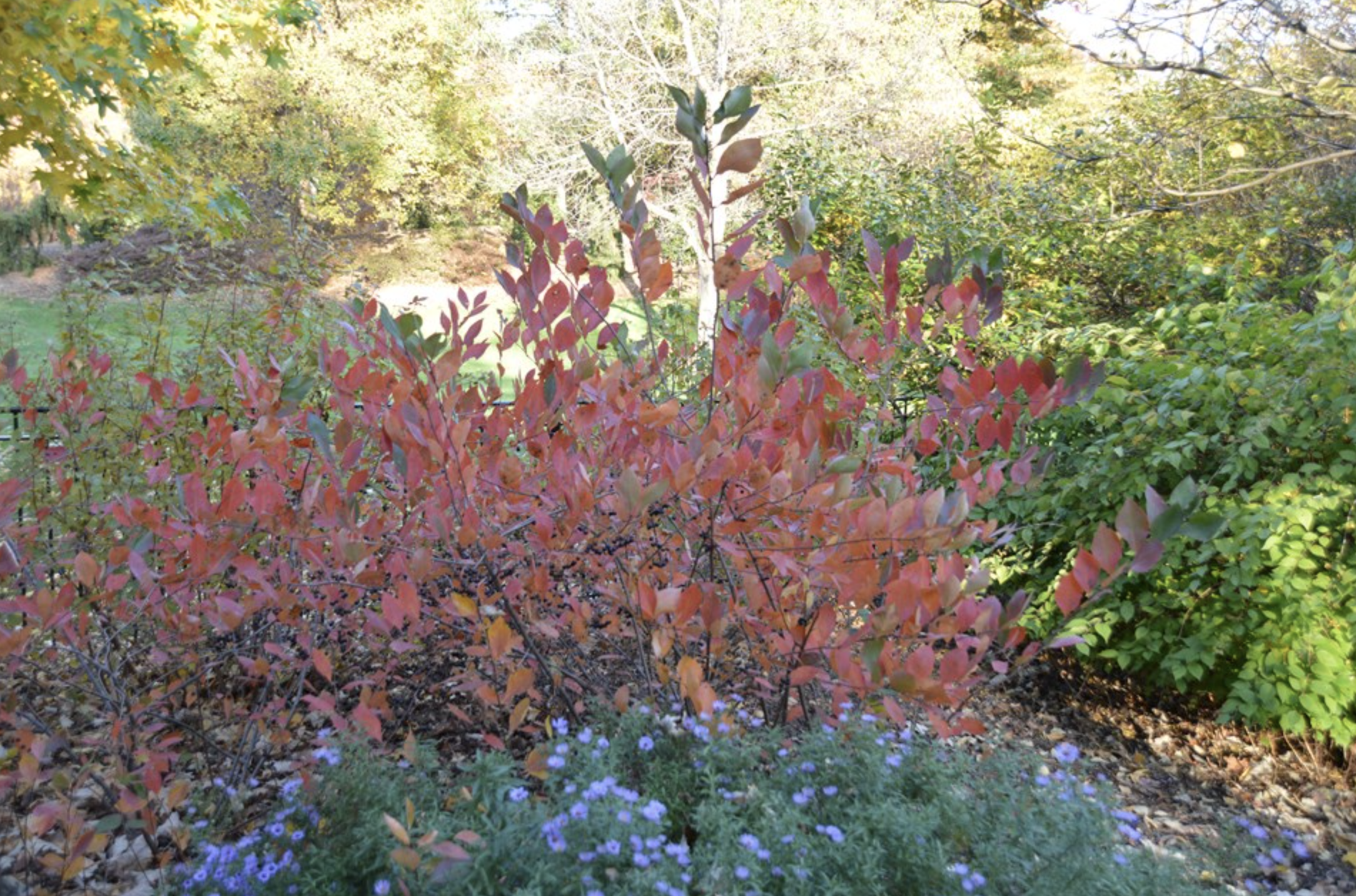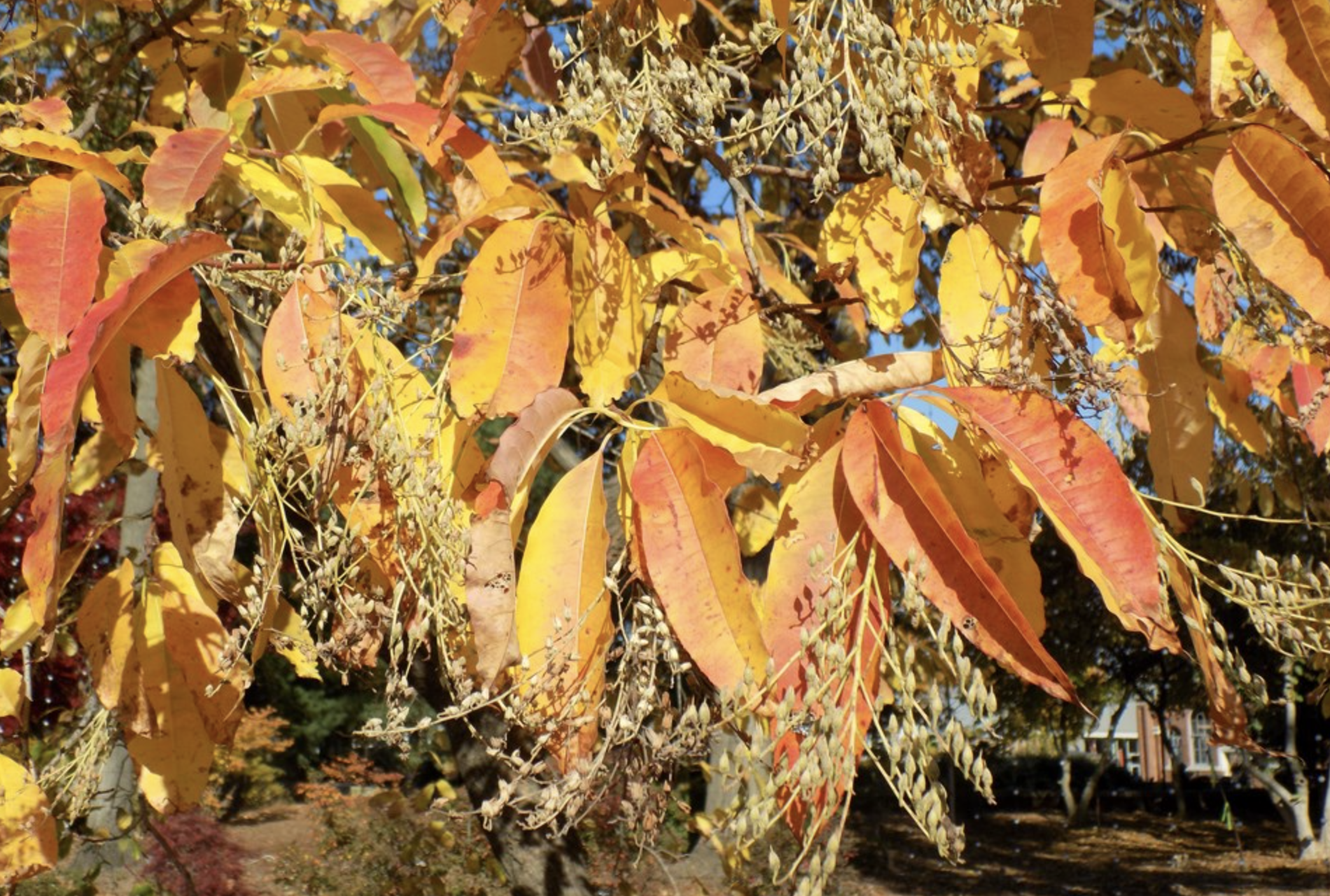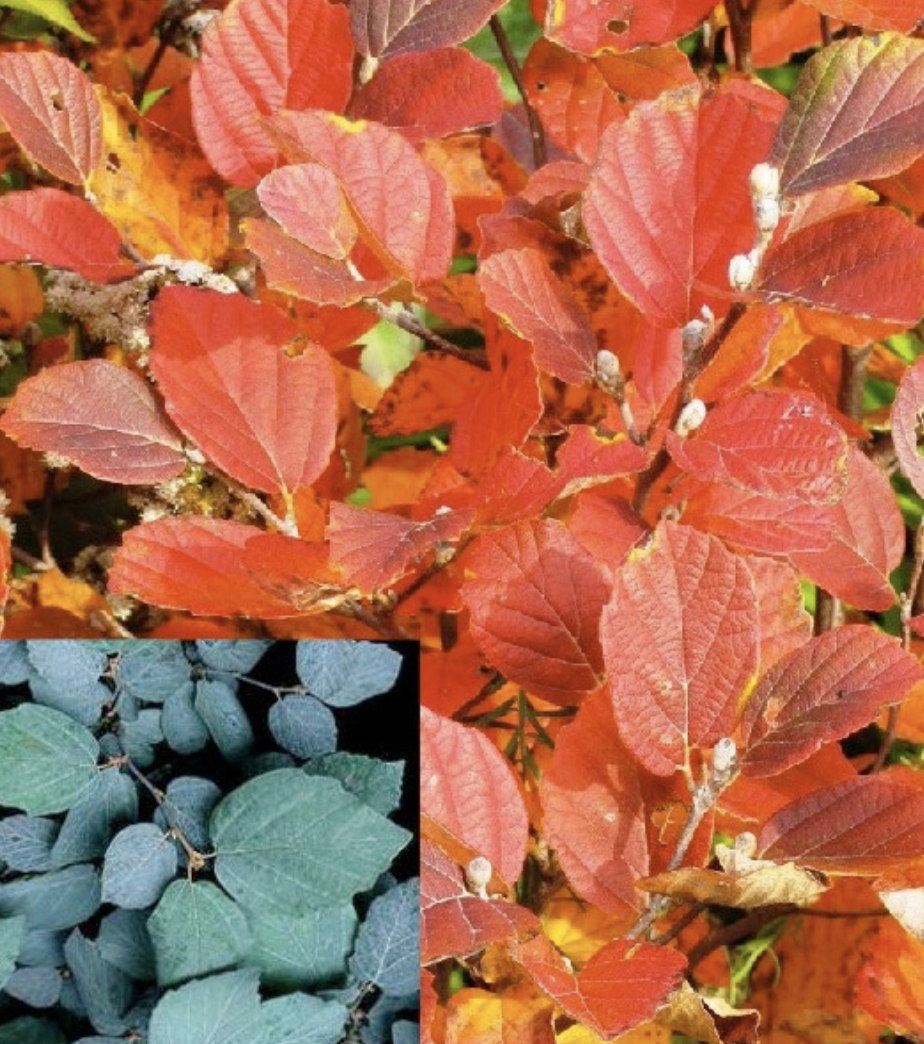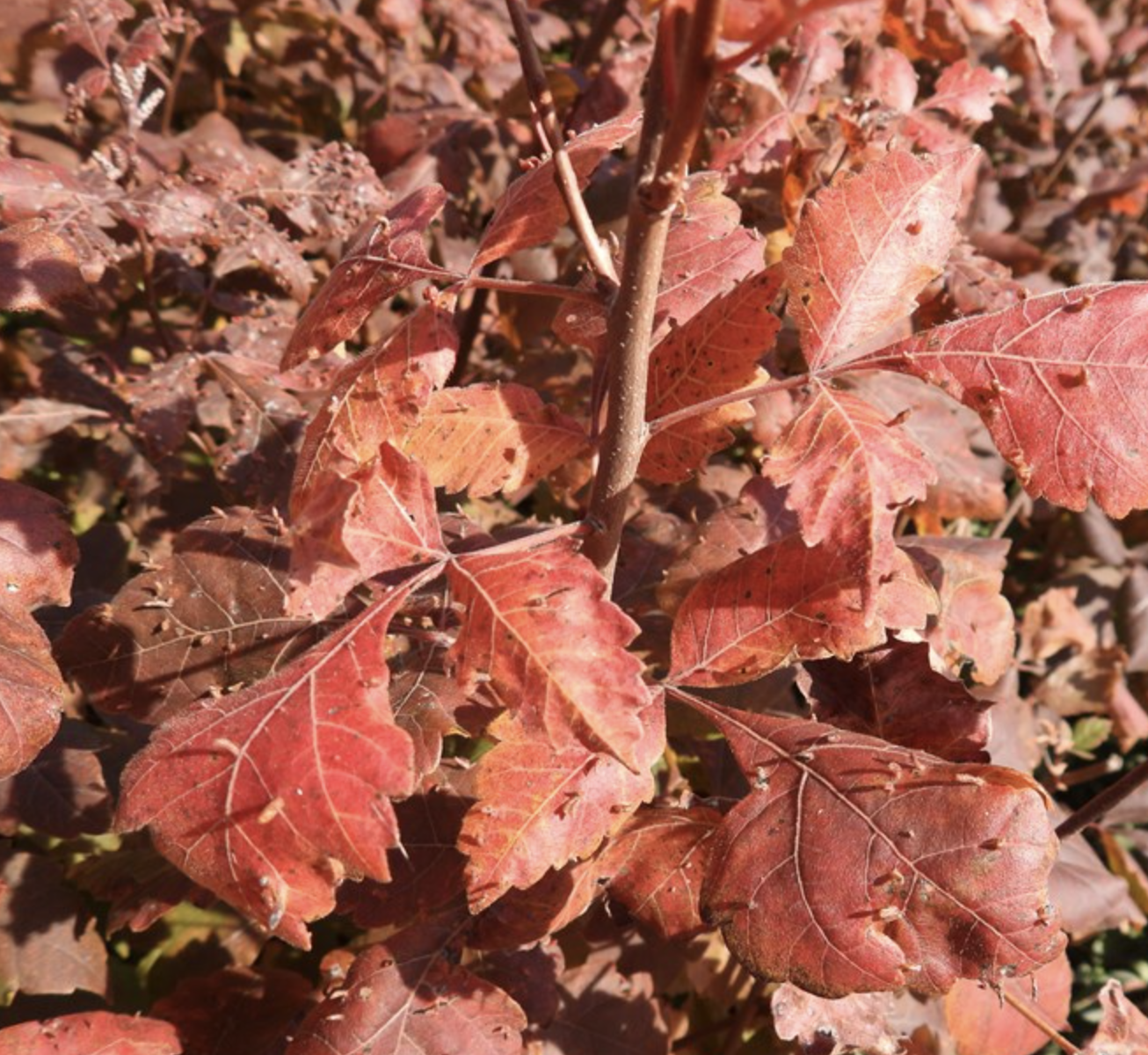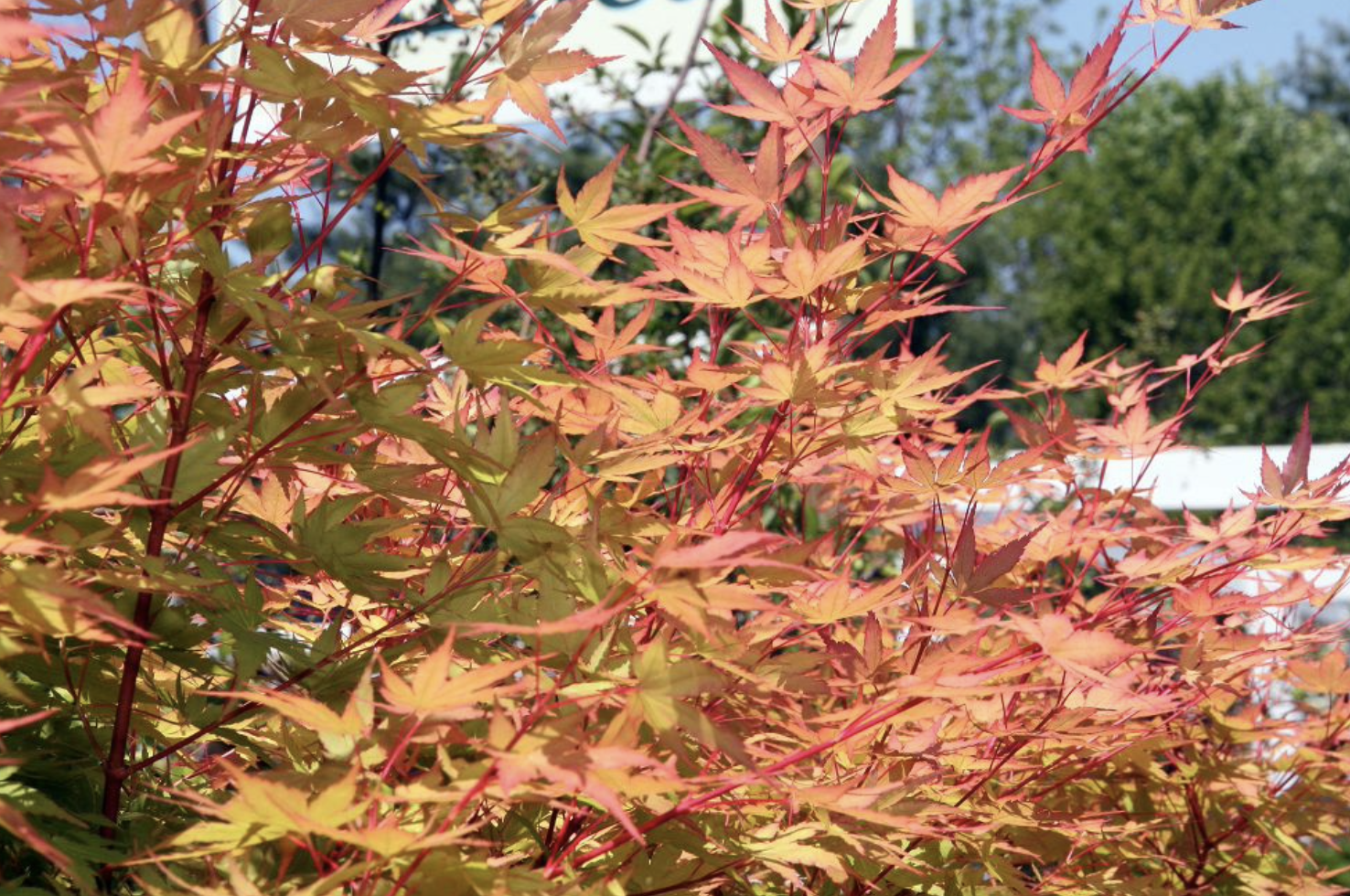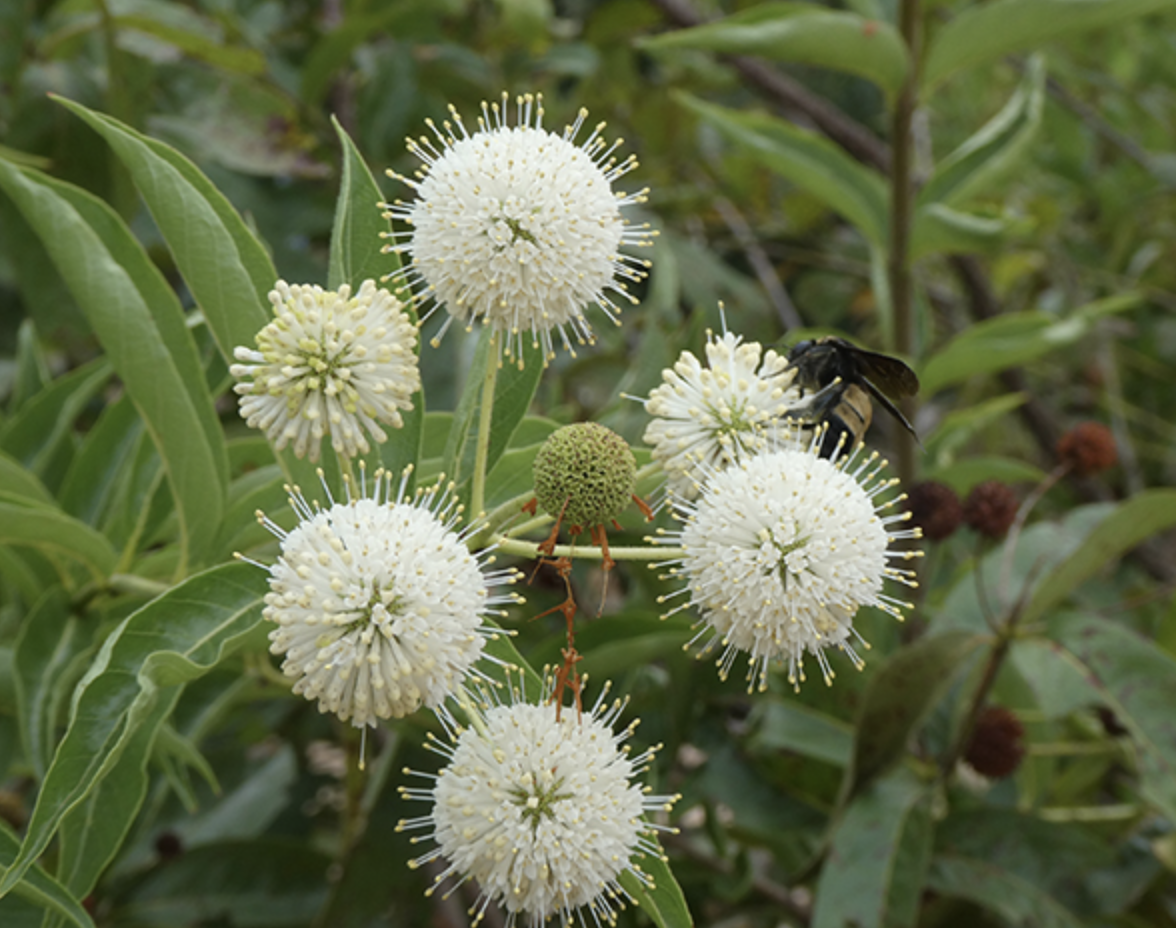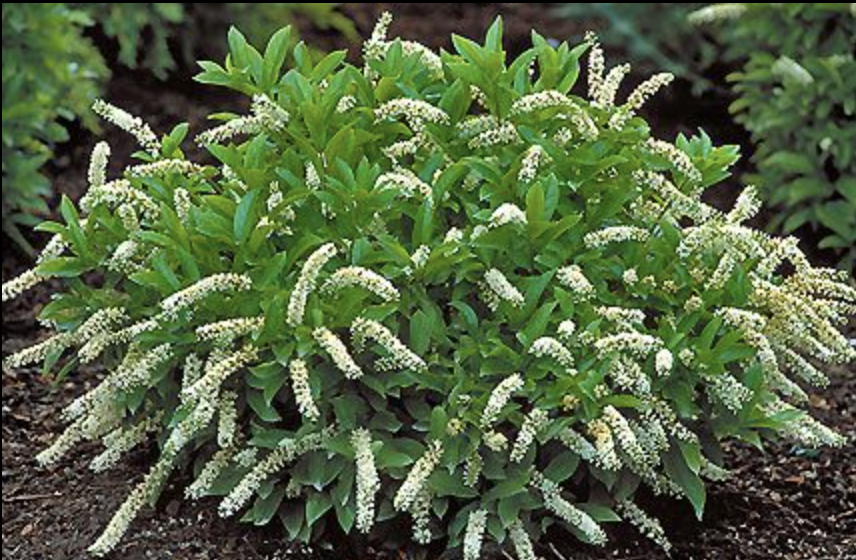Extend the season of color in the garden by adding trees and shrubs that have stunning leaf, bark, or berry color in the fall.
Oxydendrum arboretum (sourwood) has dark, glossy leaves during spring and early summer, but in July, the leaves start a slow transformation to peach, then medium rust, and finally to brilliant orange-red or pink-red. Its name refers to the sour taste of the leaves, which may contribute to its deer resistance! Sourwoods prefer rich, acidic, non-compacted, well-drained soils, and from that preference, we can tell that they are in the same family as rhododendrons. Hardy to zone 5, sourwood matures at 20 – 30’ tall by 20 – 30’ wide.
Sourwood’s delicate flower clusters, resembling the tassels of lily-of-the-valley, emerge in early July, slowly swell through mid-July, and then open fully from the end of July through the beginning of August to reveal a light fragrance that attracts honeybees and other pollinators. The showy flowers develop into green seed pods that slowly turn grey-brown and persist into the winter. From a nursery sales perspective, I have observed that customers don’t glance at sourwood until the creamy-white flowers are fully open against the backdrop of vibrant red leaves, and then the trees sell out very quickly. Sadly, the customers miss out on observing the slow, beautiful changes during flower development and leaf-color maturation.
For burgundy-red leaves in fall, try Aronia melanocarpa. It is also called chokeberry, but don’t let the name scare you, because the fruit is edible for birds and humans. In the spring, Aronia produces tiny white flowers held together in quarter-sized clusters. In summer, the flowers ripen into clusters of blue-black fruit, which are sour if eaten when cooked plain, but more palatable if reduced to a syrup and drizzled over ice cream or oatmeal as a great provider of vitamin C.
In the fall, Aronia’s dark green, glossy leaves turn burgundy-red or purplish. The cultivar ‘Viking’ is 4 – 6’ tall by 4 – 6’ wide, has a rounded crown, and tends to be bare twigged at the base. For small spaces, use ‘Low Scape Mound,’ which matures at 12 – 24” tall by 18 – 24” wide. For an alternative to pachysandra, try ‘Ground Hug,’ which grows only 8 – 14” tall by 3’ wide.
To get brilliant orange-red leaf color in autumn, install a Fothergilla. There are several species and cultivars available, and all have white, bottle brush-shaped flowers in the spring before the leaves develop. The softly spiked flowers sit on bare twigs, which creates an interesting texture, and might look striking if set in front of a dark green evergreen. After flowering, the leaves emerge green, thick, and leathery. They stay green throughout the summer as the dead flower spikes turn brown and slowly disintegrate. In fall, the leaves turn a mottled mix of orange, yellow-orange, and red-orange. The cultivar ‘Blue Shadow’ is hardy to zone 4, gets 3 – 5’ tall by 4 - 5’ wide at maturity, and sports leaves with a bluish cast, which adds interest during the summer before the autumn color-change.
Rhus aromatica (fragrant sumac) will also provide a gorgeous autumn display of orange to red-burgundy. It is not the species that grows along the roadside, and neither species is poisonous. In fact, the species along the road (Rhus typhina) has red, furry seeds that are high in vitamin C, and can be added to lemonade to make a delicately colored and flavored late-summer drink. The species aromatica has leaves that smell like mown grass; pull off a three-parted leaf and crush it between your fingers to release the aroma. The cultivar ‘Gro-Low’ stays 18 – 24” low, but it can widen out to 6 – 8’. It works wonderfully as a groundcover in full sun, part-shade, and deeper shade. Use it on slopes where the mower can’t go or as a transition between a formal bed and a more woodland-like setting.
Ilex verticillata (winterberry) is a deciduous holly that drops its small, dark-green leaves in the fall. If pollinated properly by separate male shrubs, the female shrubs will produce a plethora of yellow, orange, or, most commonly, red berries in mid-fall. The vibrant berries will persist until late winter when food is scarce and the birds flock in to eat the nutritious fruit. Many winterberry cultivars are large, maturing at 8 - 10’ tall by 8 - 10’ wide, but the cultivar ‘Little Goblin Red’ stays 3 – 4’ tall by 3 – 4’ wide. Gardeners must also make room for its male pollinator ‘Little Goblin Guy,’ which similarly matures at 3 – 4’ tall by 3 – 4’ wide, but does not produce berries.
Leaves and berries can provide late-season color, but to really extend the interest in the garden, consider adding shrubs and trees with colorful winter bark. Acer palmatum ‘Sango-kaku’ has leaves that open yellow with a red edge, turn yellow-green during the summer, then return to a lovely yellow in the fall. The leaf transition is amazing, but the best feature is the transition of the bark color. It begins reddish-brown in spring, becomes redder in the summer, intensifies again in the fall, and finally turns brilliant red in the winter, where it stands out strikingly against the barren, white, snowy landscape. The cultivar can be challenging to find at suppliers, and the price will reflect that.
Other plants with late-season color: Nyssa sylvatica (tupelo), Cephalanthus occidentalis (buttonbush), and Itea virginica (Virginia sweetspire).
Click on the photos below for plant identification.

